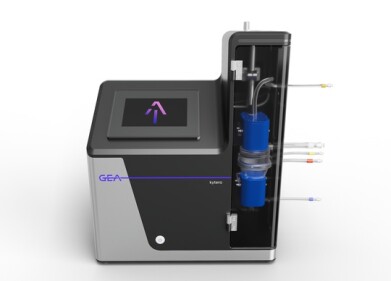Laboratory products
The British Antarctic Survey Chooses microscopes for Field Missions
Feb 07 2011
Meiji Techno UK is pleased to announce that the British Antarctic Survey chose Meiji microscopes for their recent research expedition to Spitsbergen.
The British Antarctic Survey also works in the Arctic at the Natural Environment Research Council’s Research Station situated at Ny-Ålesund (78°55’ N, 11°56’ E), on the high Arctic island of Spitsbergen, part of the Svalbard archipelago. The station, which supports mainly Earth and life scientists, is part of an international research community including stations owned by Norway, Germany, Japan, Italy, France and the UK. Reputedly the world’s northern most community of up to 150 people, it has a unique atmosphere kindled by scientists of various disciplines and nationalities living, working and cooperating in a beautiful, though sometimes harsh, environment.
In August this year, BAS researcher Dr Kevin Newsham took his research programme to Ny-Ålesund on Spitsbergen to find out whether or not leafy liverworts - a type of lower plant similar to mosses - are colonised by symbiotic fungi. The liverworts were sampled from several locations in Kings Bay and identified in the field by the use of a x20 magnification hand lens.
Dr Newsham specifically chose to use the Meiji EMZ-5TR zoom stereo binocular dissecting microscope with a powerful Meiji FT191 dual arm fibre optic illuminator as the external light source to identify the liverworts. This equipment was chosen because of its rugged and ergonomic design, and its excellent value for money. The microscope and light source are situated in the laboratory of Harland House, the NERC’s station. The higher magnification (up to x 200) provided by the dissecting microscope was necessary in order to visualise features that characterise specific genera of leafy liverworts. Ten genera were identified, including Cephaloziella, Lophozia and Barbilophozia - which also occur in the Antarctic - and others, including Tritomaria, Odontoschisma and Aneura.
The leafy liverworts were transported to the UK, either dried or as fresh material, where they are to be stained and examined by epifluorescence microscopy for the presence of fungal structures in their tissues. Further analyses, based on extracting DNA from liverwort tissues, the PCR amplification of fungal DNA and subsequent identification of the fungi present in the plants by analysis of DNA sequences, will take place in spring 2011.
Digital Edition
ILM 50.2 March 2025
March 2025
Chromatography Articles - Effects of small deviations in flow rate on GPC/SEC results Mass Spectrometry & Spectroscopy Articles - Waiting for the present to catch up to the future: A bette...
View all digital editions
Events
Mar 18 2025 Beijing, China
Mar 20 2025 Brussels, Belgium
Mar 20 2025 Chandigarh, India
ACS National Meeting & Expo, Spring 2025
Mar 23 2025 San Diego, CA, USA
Mar 25 2025 Paris, France



















